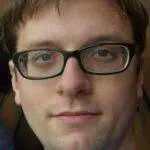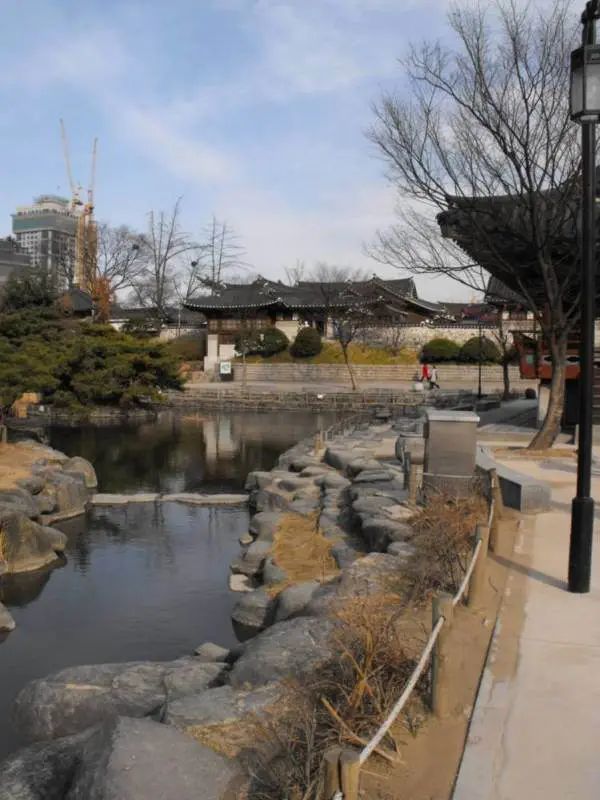
Welcome to Namsangol Hanok (Traditional) Village – home to several homes belonging to Koreans from the past. From commoners to queens, these restored houses represent Korea’s past pretty well. It’s an excellent job showing life, and doesn’t feel too touristy (I only saw a few other foreigners during the afternoon). The price of free is right, and even offers tours in English twice a day.
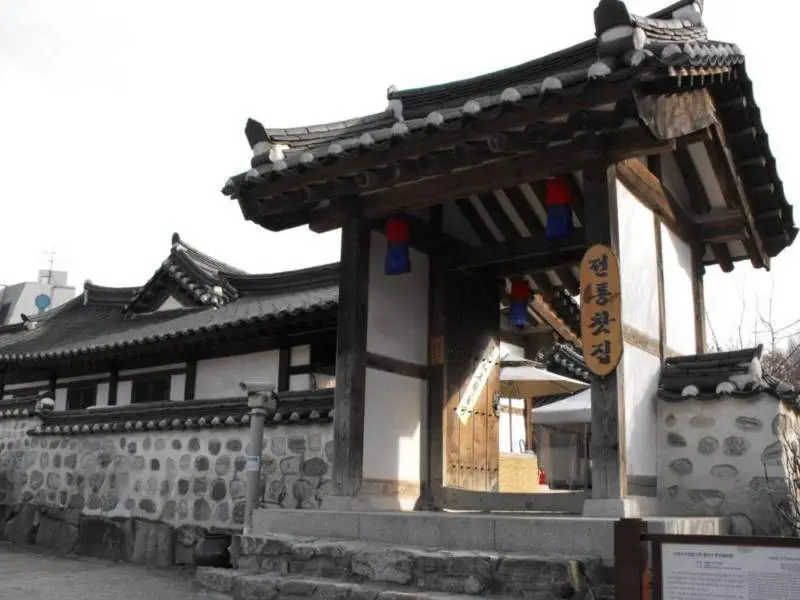
The house of Yi Seungeop, the carpenter that supervised the rebuilding of Gyeongbukgung. Originally built in the 1860’s, the nearby sign says to look for “the elaborate latticework on the four-paned kitchen window”.
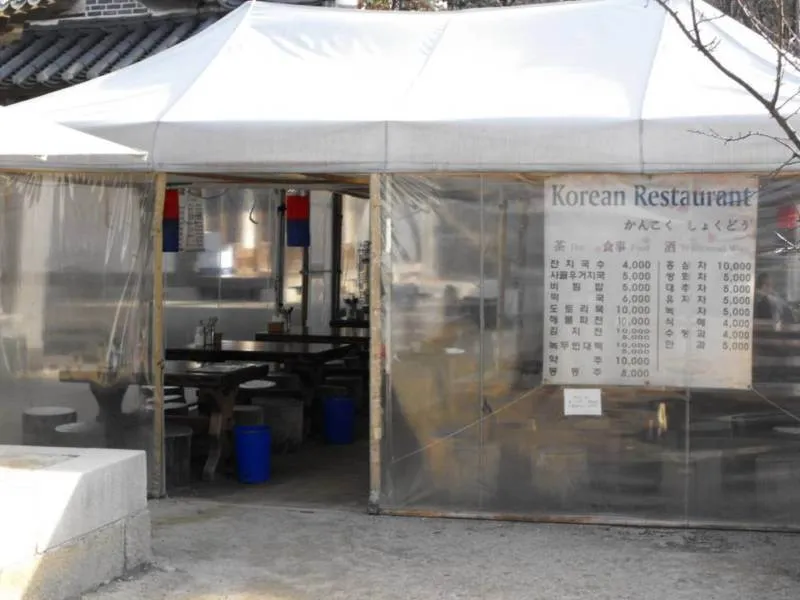
Just inside his house? A modern Korean restaurant. I did a little more looking around, but was drawn back to the common area:
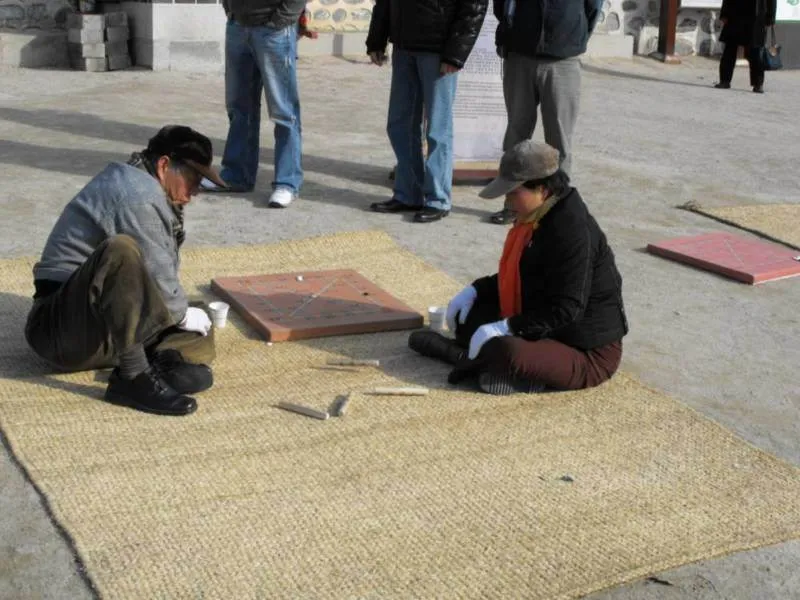
An older Korean couple playing yut – and with a sign explaining the game nearby I can FINALLY talk about it intelligently. The four round sticks have a flat edge with some symbols on them. The player throws them onto the woven mat, counts how many symbols face up, then move their ‘horses’ (pieces) around the board, much like you would in ‘Sorry!’ or ‘Aggravation’. You win when all of your ‘horses’ get home.
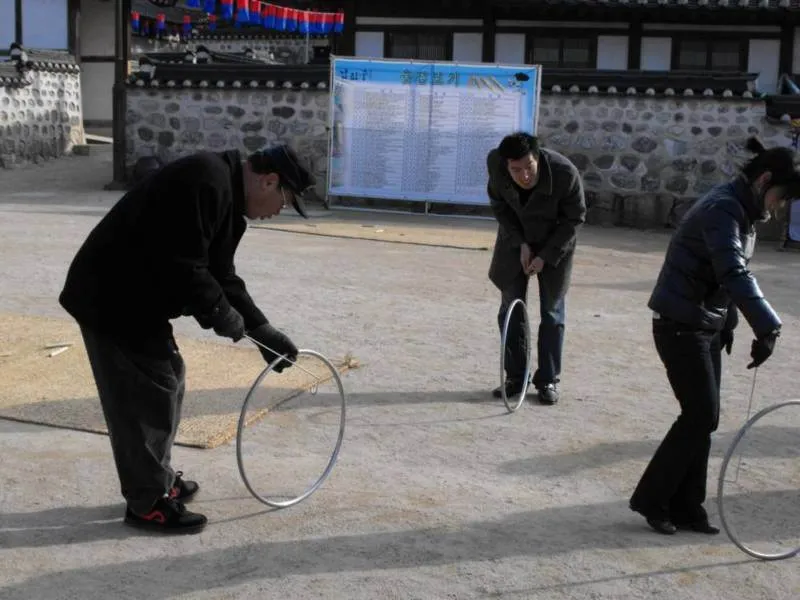
Another traditional Korean pastime: hold a metal pole and keep the hoop going around for as long as possible. It’s a rather noisy pastime, as the metal-on-metal sounded like someone pulling out their sword and putting it back over and over again.
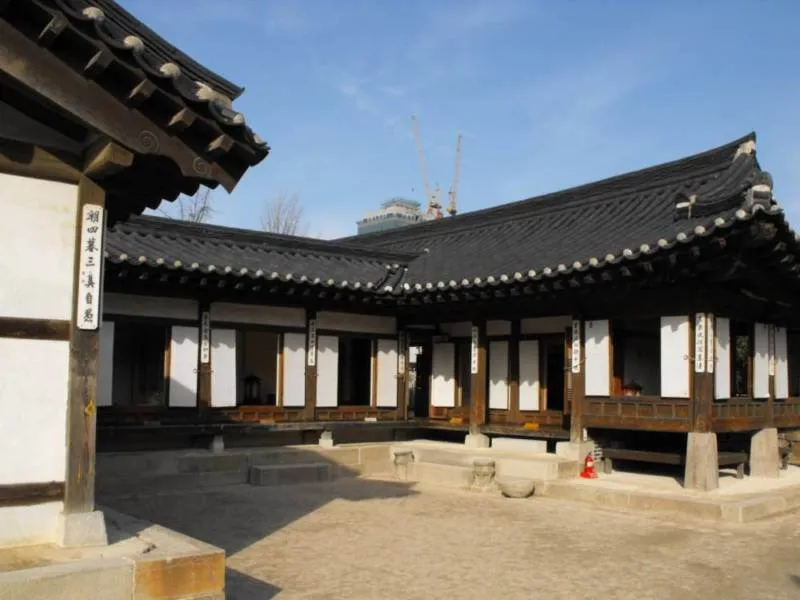
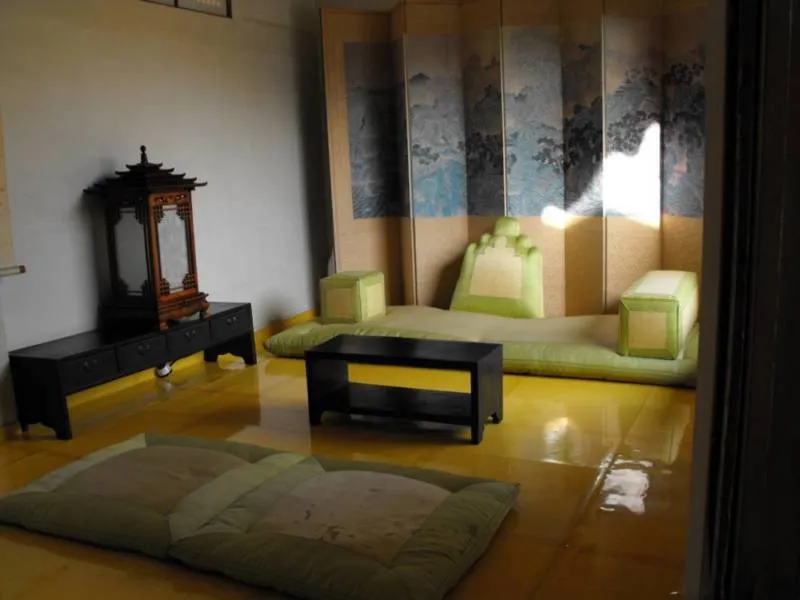
The house of Yun Taekyeong, the father-in-law of Emperor Sunjong, originally built in 1906. The men’s quarters and women’s quarters were connected, while the servants quarters formed the lower part of the building.
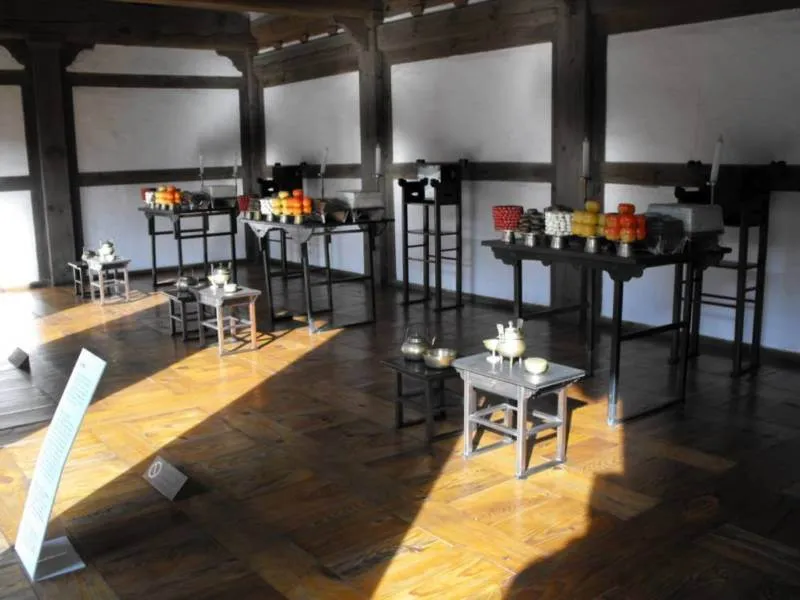
Part of the aforementioned house (but detached from the main building) is a sadang, or an ancestral shrine. It’s where you place the sinju (ancestral tablets) and hold memorial services in their honor. I wonder how many people still keep shrines like this these days…
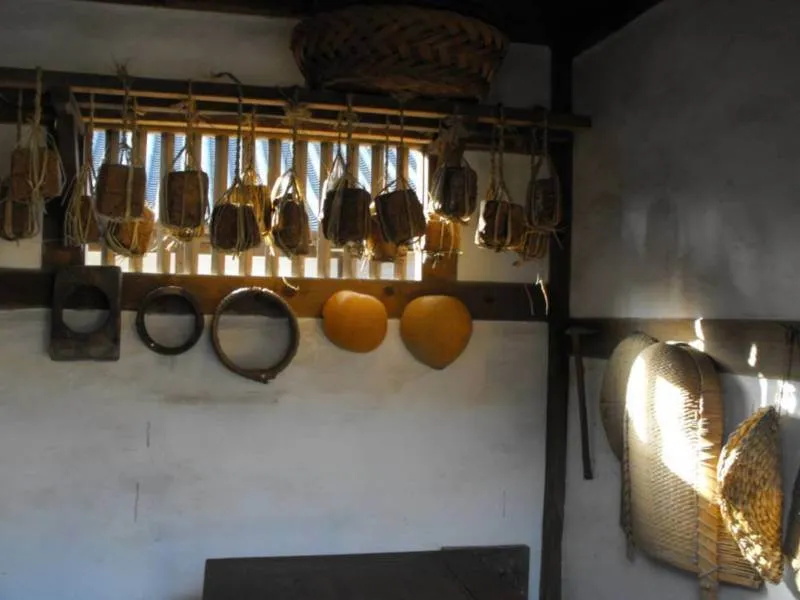
The storage area inside one of the houses – various bowls and sacks line the walls rather nicely.
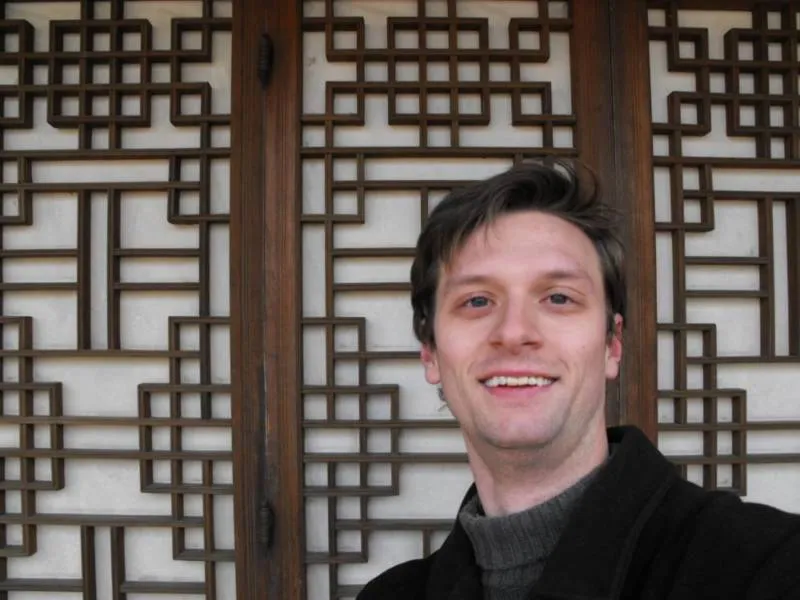
Hey look it’s me! I love the latticework…
Near the five houses is a Traditional Craftwork Gallery, also known as a place to warm up the hands…
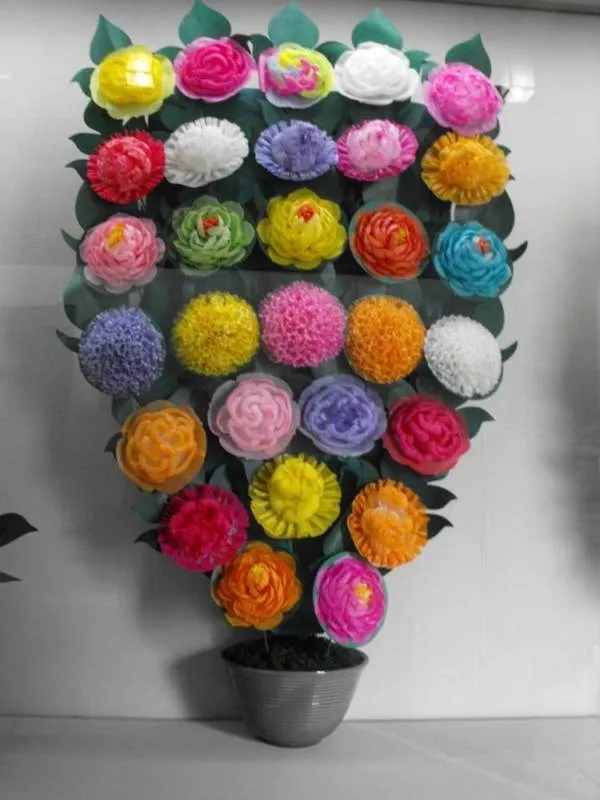
These are jihwa, flowers created from dyed rice paper. Paper flowers served as a ceremonial staple for Korean households from commoners to royalty. It’s a dying art that’s given way to Western flower crafting, but these two artists (Seogyong and Yi Yeong-hui) continue in the tradition.
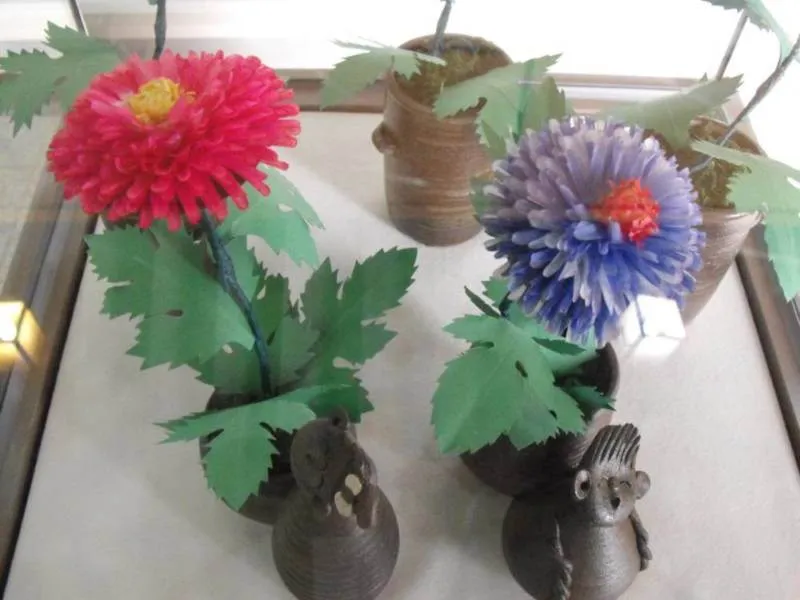
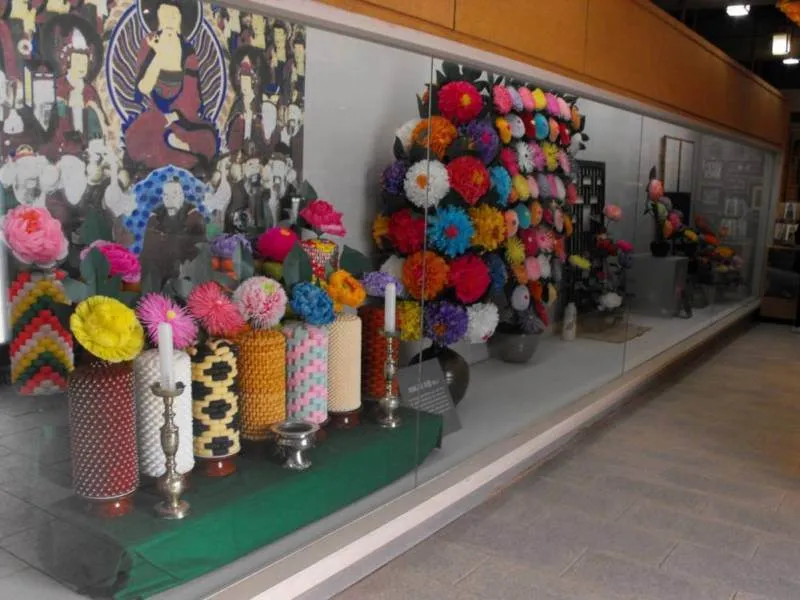
Simply incredible – again, remember – this is paper, people. It makes those swans and paper airplanes to shame, to say the least…

An interesting scene near the roof of one of the houses.

Lanterns stretched across the houses adds a nice splash of color to an otherwise monochromatic shot.
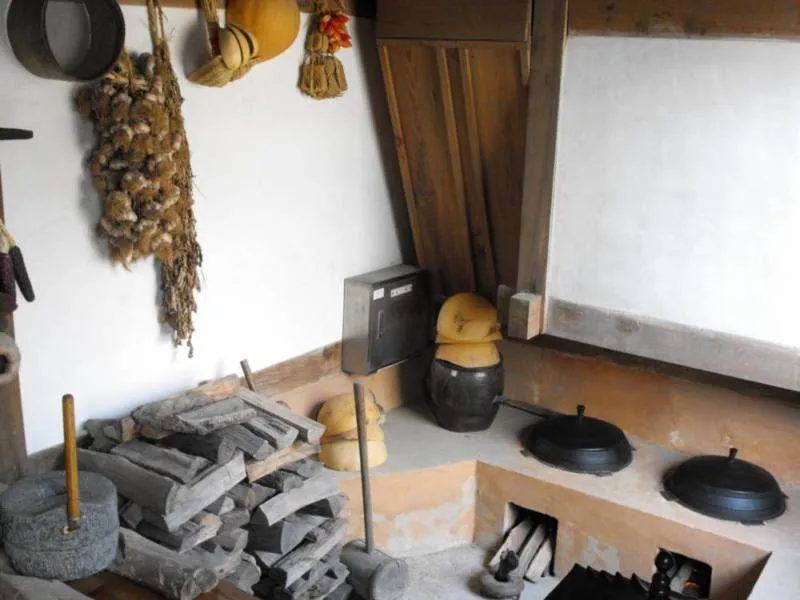
The kitchen for one of the houses. Watch your toes from the fire!
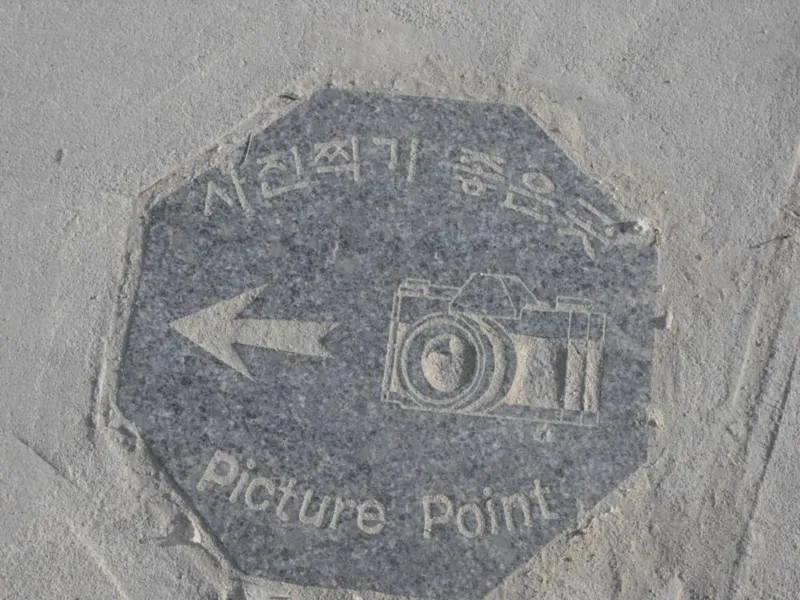
I’ve seen these picture points before at other places – great helps for the clueless tourist who doesn’t know what to take pictures of… This is what you get when you aim the lens in the way the arrow points and push the button (remember to take the lens cap off!):
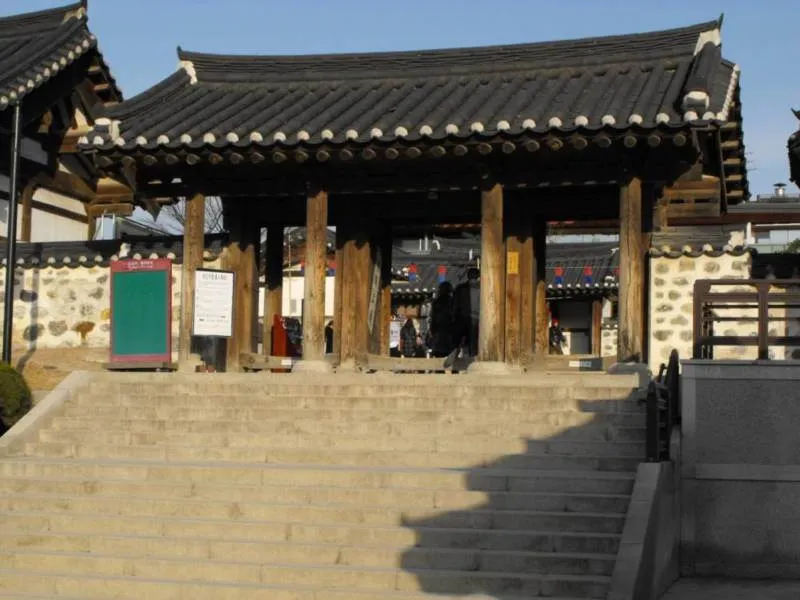
Essentially a picture of the entrance to the courtyard. I left the area of houses and courtyards…
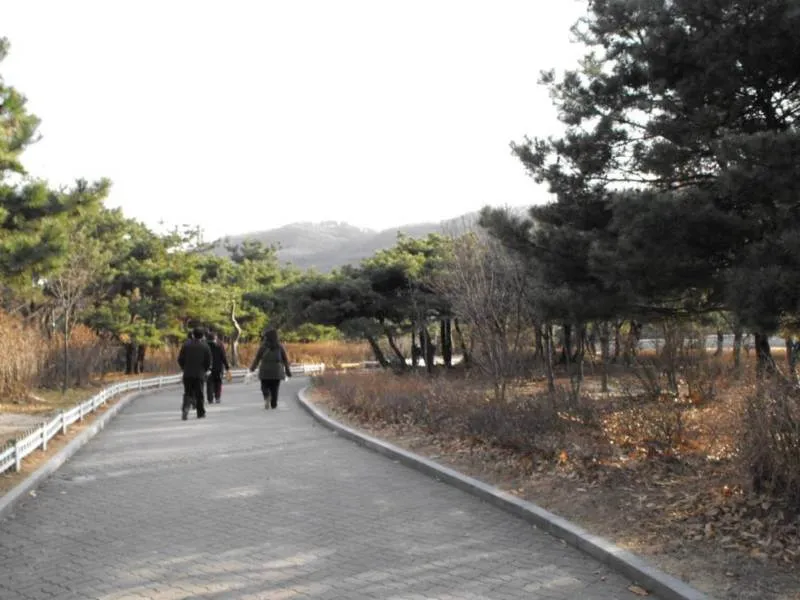
…and walked along a path leading to a Millennium Time Capsule. Getting there’s a 10-minute walk from the entrance to the village, but worth it…. sort of…
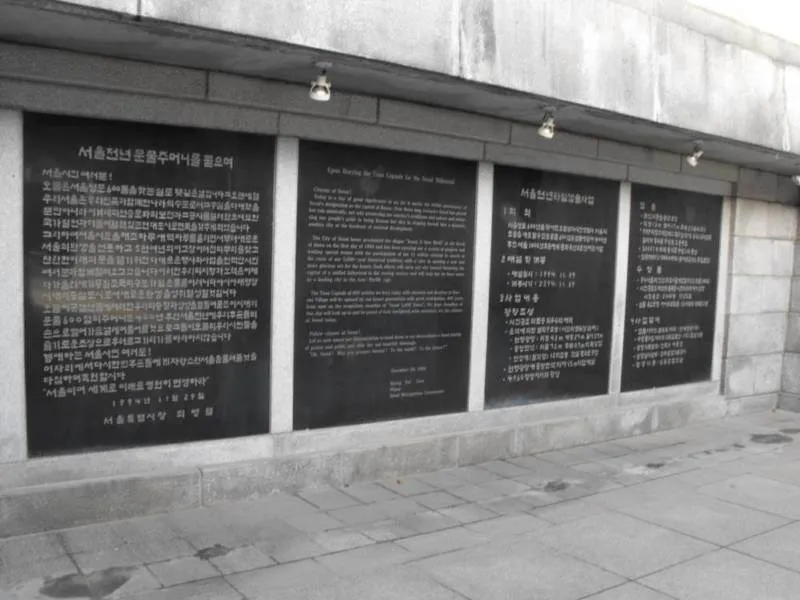
From left to right, a letter from Byung Yul Choe, the mayor of Seoul in 1994 when the time capsule was buried (Korean and English), and then presumably some instructions about where to dig or what to look for. That’d be a little embarrassing, putting something in the ground and not be able to find it again….
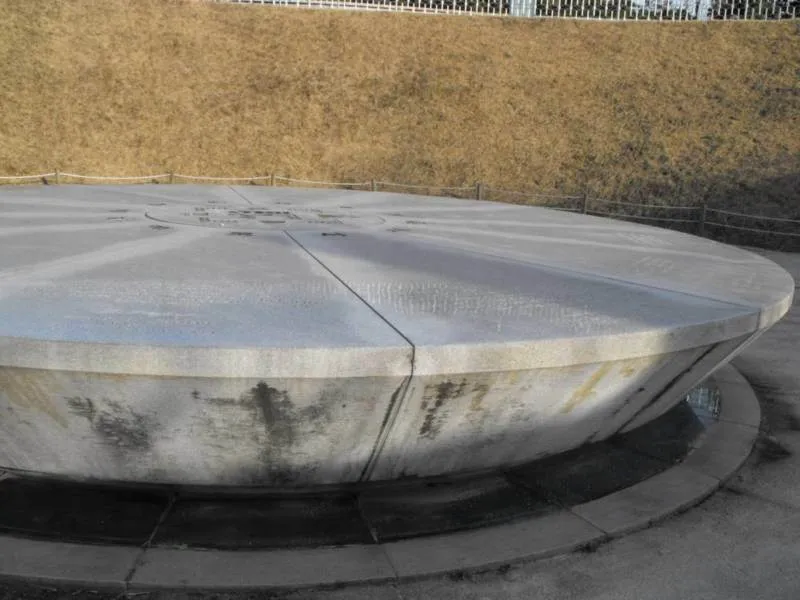
Yup, it’s a time capsule. It was buried in 1994 with 600 items of Korean life on the 600th anniversary of Seoul becoming a city. The plan / hope is for the capsule to be reopened on November 29, 2394, 400 years after being buried and when Seoul will turn 1,000.
The area is pleasant, and definitely informative. You can kind of picture the life these people may have lived, and it’s quiet enough. Like other places in Seoul, you have to ignore the taller and much more modern buildings on the skyline.
Directions: take line 3 or 4 of the Seoul subway system to the Chungmuro station. Take exit 3 to street level, then turn around immediately. Walk about 50 meters and turn left before the GS25. Look and walk straight for about 200 meters to the entrance.

